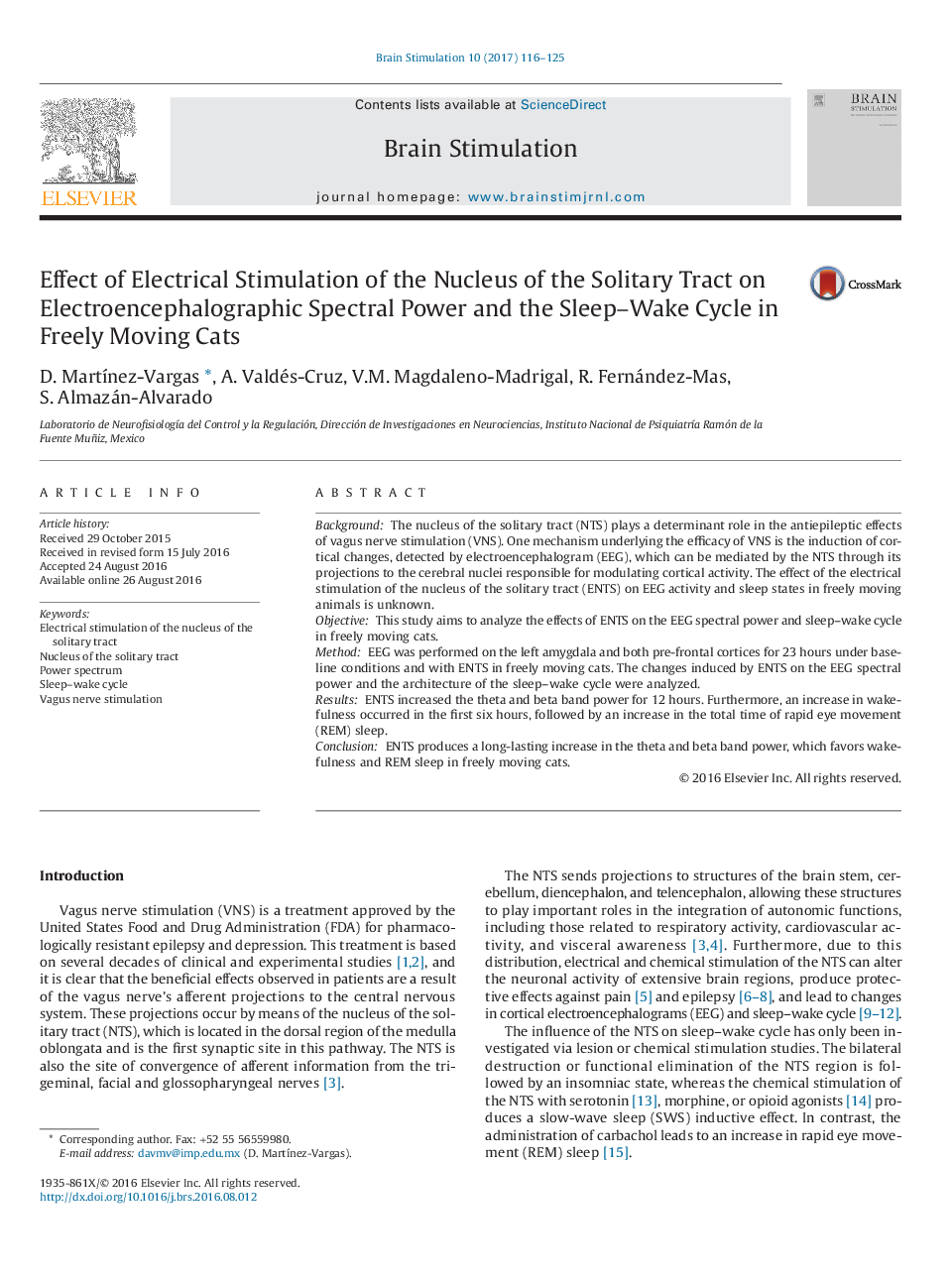| Article ID | Journal | Published Year | Pages | File Type |
|---|---|---|---|---|
| 5626605 | Brain Stimulation | 2017 | 10 Pages |
â¢We analyze the effect of electrical stimulation of the nucleus of the solitary tract (ENTS) on EEG spectral power and the sleep-wake cycle.â¢ENTS increases the theta and beta band power for 12 hours in left and right pre-frontal cortex.â¢ENTS provoked increases the total time of wakefulness and REM sleep.
BackgroundThe nucleus of the solitary tract (NTS) plays a determinant role in the antiepileptic effects of vagus nerve stimulation (VNS). One mechanism underlying the efficacy of VNS is the induction of cortical changes, detected by electroencephalogram (EEG), which can be mediated by the NTS through its projections to the cerebral nuclei responsible for modulating cortical activity. The effect of the electrical stimulation of the nucleus of the solitary tract (ENTS) on EEG activity and sleep states in freely moving animals is unknown.ObjectiveThis study aims to analyze the effects of ENTS on the EEG spectral power and sleep-wake cycle in freely moving cats.MethodEEG was performed on the left amygdala and both pre-frontal cortices for 23 hours under baseline conditions and with ENTS in freely moving cats. The changes induced by ENTS on the EEG spectral power and the architecture of the sleep-wake cycle were analyzed.ResultsENTS increased the theta and beta band power for 12 hours. Furthermore, an increase in wakefulness occurred in the first six hours, followed by an increase in the total time of rapid eye movement (REM) sleep.ConclusionENTS produces a long-lasting increase in the theta and beta band power, which favors wakefulness and REM sleep in freely moving cats.
